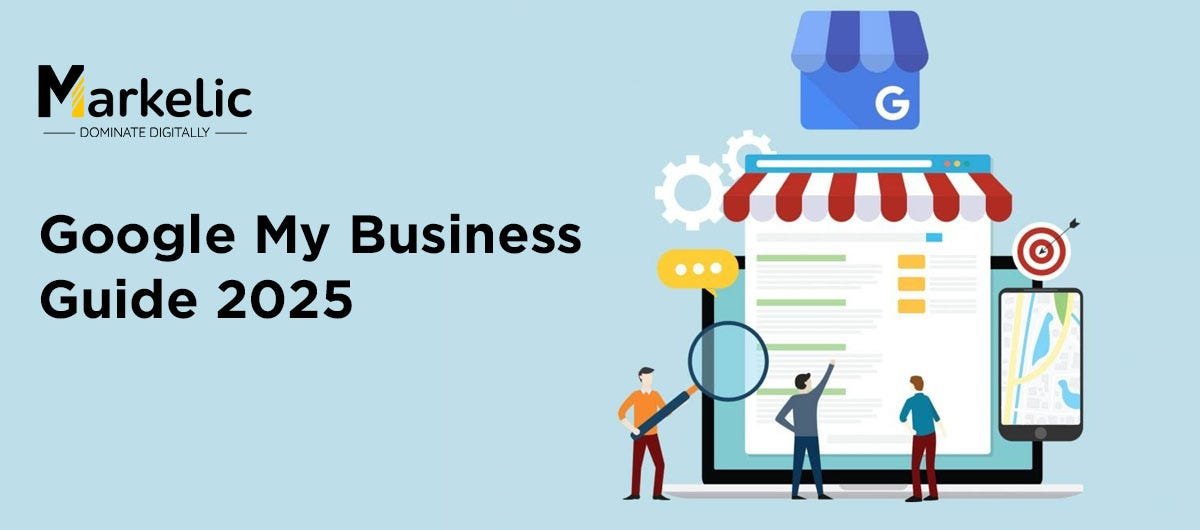Google My Business optimization guide 2025
Introduction
Welcom to the heybilal.site, In 2025, optimizing your Google My Business (GMB) profile, now called Google Business Profile (GBP), is critical for small businesses aiming to dominate local search results and attract customers. An unoptimized GBP can lead to decreased visibility, missed opportunities, and lost revenue. This guide breaks down the problem of GBP optimization into manageable components, identifies common issues, and provides actionable steps to resolve them. With real-world examples, tools, and strategies, you’ll learn how to enhance your local SEO, engage customers, and prevent future pitfalls.
Breaking Down the Problem: Components of GBP Optimization
Optimizing a GBP involves several interconnected components. Each plays a role in ensuring your business appears prominently in Google Search and Maps. Here are the key elements:
-
Profile Completeness: Ensuring all fields (name, address, phone number, hours, categories, etc.) are fully filled out.
-
Accuracy and Consistency: Maintaining consistent Name, Address, and Phone Number (NAP) across all online platforms.
-
Visual Content: Adding high-quality photos, videos, and virtual tours to showcase your business.
-
Customer Engagement: Managing reviews, Q&A sections, and posts to build trust and interaction.
-
Analytics and Insights: Using GBP Insights to track performance and refine strategies.
-
Local SEO Integration: Incorporating keywords, attributes, and posts to align with local search intent.
Common Causes of GBP Optimization Issues
-
Incomplete Profiles: Businesses often skip fields like business descriptions, attributes, or service areas, reducing visibility.
-
Inconsistent NAP: Variations in NAP across directories (e.g., “St.” vs. “Street”) confuse Google’s algorithm.
-
Neglected Updates: Failing to update hours, photos, or posts leads to outdated information.
-
Poor Review Management: Ignoring reviews or not responding professionally damages credibility.
-
Lack of Keyword Strategy: Not using relevant local keywords in descriptions or posts lowers search rankings.
-
Limited Use of Features: Underutilizing posts, Q&A, or analytics misses opportunities for engagement.
Consequences of Not Optimizing GBP

-
Reduced Visibility: Incomplete or inconsistent profiles rank lower in Google’s Local Pack and Maps, making it harder for customers to find you. For example, a BrightLocal study found that unoptimized profiles average only 1,260 views monthly, with just 59 actions taken (less than 5%).
-
Lost Customers: Potential clients may choose competitors with more complete, engaging profiles. Businesses with photos get 42% more direction requests and 35% more website clicks.
-
Damaged Reputation: Unanswered negative reviews or outdated information can erode trust, leading to fewer conversions.
-
Missed Insights: Not using GBP Insights means missing data on customer behavior, hindering strategic improvements.
-
Penalties: Keyword stuffing or violating Google’s guidelines (e.g., using fake addresses) can result in profile suspension.
Actionable Step-by-Step Instructions for GBP Optimization
Follow these steps to optimize your GBP in 2025, using tools and strategies tailored for small businesses. Each step addresses a component of the problem and includes practical resources.
Step 1: Claim and Verify Your GBP
-
Why: An unclaimed or unverified profile limits control and visibility.
-
How:
-
Go to google.com/business and sign in with your business Gmail account.
-
Search for your business. If it exists, claim it; if not, create a new listing.
-
Verify via postcard (arrives in 14 days), phone, or video (show storefront, signage, or equipment).
-
-
Tools: Use Smarty Streets to format addresses correctly.
-
Tip: Don’t edit your listing during verification to avoid delays.
Step 2: Complete and Optimize Profile Information
-
Why: A complete profile improves rankings and customer trust.
-
How:
-
Fill out every field: business name (exact match to signage), address, phone number, website, hours, and categories.
-
Choose a primary category that defines your business (e.g., “Restaurant” for a diner) and add secondary categories if applicable.
-
Write a 750-character business description with 1-2 local keywords (e.g., “best pizza in Chicago”) without stuffing.
-
Add attributes (e.g., “wheelchair accessible,” “free Wi-Fi”) to highlight unique features.
-
For service-based businesses, set service areas instead of a physical address.
-
-
Tools: Use Semrush or Ahrefs to research local keywords.
-
Tip: Ensure NAP matches your website and other directories (e.g., Yelp, Facebook).
Step 3: Add High-Quality Visual Content
-
Why: Visuals attract customers and boost engagement.
-
How:
-
Upload at least 10 photos (720p or higher): exterior, interior, products, team, and services. Avoid stock images.
-
Add a 360º virtual tour using Google’s Street View app or a professional photographer.
-
Upload a 30-second video showcasing your business (e.g., a bakery’s baking process).
-
Geo-tag photos to reinforce your location.
-
-
Tools: Use Canva for photo editing or Google Street View for virtual tours.
-
Tip: Update photos monthly to reflect seasonal changes or new offerings.
Step 4: Manage Reviews and Q&A
-
Why: Reviews influence 80% of consumer decisions, and Q&A builds trust.
-
How:
-
Respond to all reviews within 24-48 hours. Thank positive reviewers and address negative ones professionally (e.g., “We’re sorry for your experience. Please contact us to resolve this.”).
-
Use a drip campaign tool like Sendible to request reviews via email after a purchase.
-
Monitor the Q&A section and answer questions proactively. Write your own Q&As to control the narrative.
-
-
Tools: ReviewTrackers for review management.
-
Tip: Never flag negative reviews unless they violate Google’s policies (e.g., spam or fake).
Step 5: Post Regularly and Use Features
-
Why: Posts keep your profile active and improve SEO.
-
How:
-
Create weekly posts (offers, events, updates) with a call-to-action (e.g., “Book now!”). Posts last 7 days, so schedule them.
-
Enable messaging and booking features for direct customer interaction.
-
Use attributes like “new products” or “special offers” to highlight promotions.
-
-
Tools: Social Champ for scheduling posts and analytics.
-
Tip: Align posts with local events (e.g., a sale during a city festival).
Step 6: Leverage GBP Insights
-
Why: Insights reveal customer behavior and performance gaps.
-
How:
-
Access Insights in your GBP dashboard to track profile views, search queries, and actions (calls, website visits).
-
Analyze peak hours and photo views to adjust strategies (e.g., post during high-traffic times).
-
Use data to refine keywords and content (e.g., add popular search terms to your description).
-
-
Tools: Google Analytics with UTM parameters to track website clicks.
-
Tip: Review Insights monthly to stay data-driven.
Step 7: Monitor and Maintain
-
Why: Regular updates prevent outdated information and maintain rankings.
-
How:
-
Check your profile weekly for accuracy (e.g., holiday hours).
-
Audit NAP consistency across directories using Moz Local.
-
Stay updated on Google’s guidelines via Google Business Profile Help.
-
-
Tools: GMB Gorilla for professional optimization services.
-
Tip: Assign a team member to manage your GBP or outsource to an agency if time is limited.
Real-World Examples and Case Studies
Case Study 1: AONE SEO Service (Ahmedabad, India)
-
Problem: A small SEO agency struggled to rank in Google’s Local Pack for “SEO company in Ahmedabad.”
-
Solution: They verified their GBP via postcard, optimized their profile with accurate NAP, added 15 high-quality photos, and posted weekly offers. They also responded to all reviews and used local keywords like “best SEO company in Ahmedabad.”
-
Result: Within 90 days, they ranked #1 in Google Maps for multiple keywords, increasing inquiries by 50%.
-
Takeaway: Consistent NAP and active engagement were key to dominating local search.
Case Study 2: VIOS (HawkSEM Client)
-
Problem: A healthcare firm had low visibility in local searches, resulting in fewer client inquiries.
-
Solution: HawkSEM conducted a GBP audit, optimized the profile with relevant categories, added a virtual tour, and implemented a review campaign. They also integrated GBP with a local SEO strategy.
-
Result: Organic new users to their website increased by 128%, and local keyword rankings improved by 74%.
-
Takeaway: Combining GBP optimization with SEO amplifies results.
Example: Local Bakery
-
Scenario: A bakery in Chicago noticed declining foot traffic despite a GBP.
-
Action: They updated their profile with seasonal photos, posted weekly specials, and added “organic pastries” to their description. They also responded to reviews and used Insights to post during peak hours.
-
Outcome: Direction requests increased by 40%, and they attracted more local customers.
Preventing Similar Issues in the Future
To maintain an optimized GBP and avoid recurring problems:
-
Schedule Regular Audits: Check your profile monthly for accuracy and consistency. Use tools like Moz Local to monitor NAP across directories.
-
Stay Informed: Follow Google’s GBP blog or join local SEO communities (e.g., Local Search Forum) for updates.
-
Engage Continuously: Post weekly, respond to reviews promptly, and update photos to keep your profile active.
-
Train Staff: Assign a team member to manage GBP or train them using Google’s free Skillshop.
-
Outsource if Needed: If time is limited, hire agencies like GMB Gorilla or Sekel Tech for professional management.
Next Steps and Call to Action
Your GBP is a powerful, free tool to boost local visibility and attract customers. Don’t let an unoptimized profile cost you business in 2025. Take these steps now:
-
Audit Your Profile: Log into your GBP and check for incomplete fields or outdated information.
-
Implement Changes: Follow the steps above, starting with verification and profile completion.
-
Track Progress: Use GBP Insights to monitor performance and adjust strategies.
-
Get Help if Needed: Contact a local SEO expert or agency for a professional audit.
Call to Action: Optimize your Google Business Profile today to rank higher, attract more customers, and grow your business. Visit google.com/business to start, or request a free GBP audit from GMB Gorilla to uncover hidden opportunities. Act now—your competitors aren’t waiting!

В этой статье представлен занимательный и актуальный контент, который заставит вас задуматься. Мы обсуждаем насущные вопросы и проблемы, а также освещаем истории, которые вдохновляют на действия и изменения. Узнайте, что стоит за событиями нашего времени!
Изучить вопрос глубже – https://nakroklinikatest.ru/
How to Reduce Website Downtime: A Complete Guide for Web Owners – https://digitalfinds.reviewfriendly.com/how-to-reduce-website-downtime/